Sustainable Land Management Project 2, Ethiopia (SLMP-2)
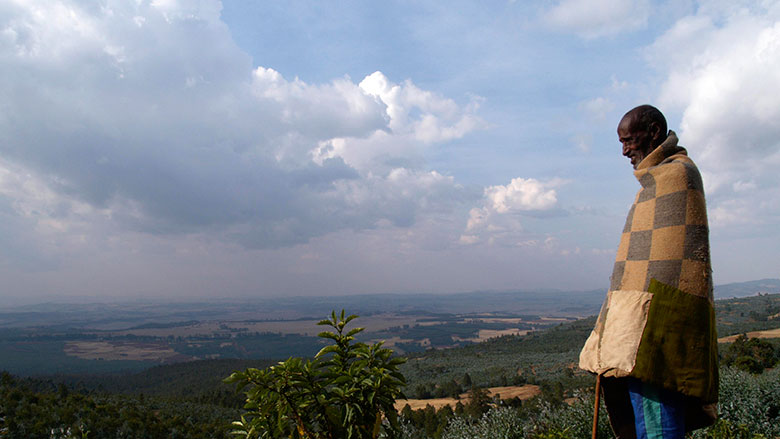
Summary
This project was designed as the second phase of the Sustainable Land Management Project (SLMP), implemented in Ethiopia from 2008 to 2018 by the national government and supported by the World Bank. Through its two phases (SLMP-1 and SLMP-2), the SLMP had the objective to reduce land degradation and improve land productivity in agricultural landscapes in selected regions of the country. It included numerous interventions based on the assumption that the Sustainable Land Management (SLM) approach in watersheds areas, supported by land certification and increased institutional capacity, would motivate community participation and smallholder’s investments for the reduction of land degradation and the improvement of productivity on farmlands.
- Read more about the Sustainable Land Management Program (SLM) and SLMP-1 here.
The SLMP-2 operation increased the geographical coverage of the project to 135 watersheds (45 were covered in SLMP-1) and continued with the watershed restoration, sustainable land management, and land adjudication activities carried out during phase 1. In addition, the solution integrated as well new activities with the purpose to enhance land productivity, and reduce deforestation and greenhouse gas emissions. It was composed of four different components with the final goal to increase natural and economic wealth, and increase the resilience to climate change on over 1.3 million ha of degraded communal and smallholder lands.
- Component 1: Integrated Watershed and Landscape Management. It supported the scaling up and adoption of SLM technologies and practices by smallholder farmers and communities in the selected areas through a participatory process.
- Component 2: Institutional Strengthening, Capacity Development and Knowledge Generation, and Management. It was designed to complement the Soil and Water Conservation measures under component 1, with the scope to execute policy revision, capacity building and training, and value chain development.
- Component 3: Rural Land Administration, Certification, and Land Use. This component aimed to enhance land tenure security of smallholder farmers, as well as the local land use planning for watersheds and villages in the supported areas.
- Component 4: Project Management. It supported the different activities included in the coordination and management of the project at the national and regional levels.
By the end of its implementation, the outcomes of the project contributed to the targets related to climate, forest, water, energy, and land tenure defined by the national Ethiopian government in the Growth and Transformation Plan, and the Climate Resilient Green Economy. Furthermore, it also supported the country’s commitment to the TerrAfrica partnership, and the Bonn Challenge, a global effort for the restoration of 150 million ha of deforested land by 2020 and 350 million ha by 2030.
Overview
- Location:
- Implementation sites:
- Single country
- Multiple locations
- Mountain region:
- Simien mountains, Ethiopia highlands
- Province:
- Tigray, Benishangul Gumuz, Southern Nations Nationalities and People’s Region (SNNPR), Oromia, Gambela, Amhara
- Site locations:
The project was implemented in 1,820 micro-watersheds located in 135 watersheds in 142 woredas/districts within the six involved regions.
- Solution scale:
- Ecosystem type(s):
- Solution type(s):
- Climate impact(s) addressed:
- Impact time-scales:
- Co-benefits:
- Implementation timeline:
- 2014 - 2018
Solution details
Main beneficiaries & outcomes
The numerous project interventions benefitted a total of 421,130 rural households, equivalent to 76.5% of the households located in 135 watersheds in the implementation area. Reduced land degradation, and improved land productivity in the selected watersheds accounted for the two main outcomes. This helped, among other things, to expand and enhance income-generating activities, and reduce poverty. Most economic benefits resulted from increased productivity (60%) and avoided soil loss (31%). Nevertheless, these benefits depend on the adequate future maintenance of infrastructure, and capacity building.
The participation of women in the planning and implementation activities, and their integration into the main decision-bodies was a key priority during the solution’s process. According to available data, on average, women represented 17.6% of the members of the Woreda (regional) Technical Committees, 26% of the Kebele (local) Watershed Teams, and 32.3% of the Community Watershed Teams. Moreover, the project also intended to reach equitable benefit sharing and to improve the overall living conditions of local women, in particular by reducing their workload in house chores. Gender awareness training and capacity building activities also took place.
Land certification activities were beneficial as well to 9, 661 landless youth (of which 33% were women) by providing them with certificates or other legal documentation to use communal landholdings in exchange for restoring land.
Planning and implementation
The implementation of this solution, which was estimated as being “highly efficient” in the final assessment report, was facilitated by the lessons and operational experiences gained during the execution of SLMP-1 (phase 1 of the SLM project). This existing knowledge assisted the preparation process for the generation of realistic objectives, as well as for the prompt identification of stakeholders. The national government, through the Ministry of Agriculture, functioned as the implementing agency, while the World Bank provided support and monitoring for the procurement and implementation activities. A step-by-step Project Implementation Manual was prepared for guiding implementation, this was in line with the Financing Agreement and was necessary for the day-to-day procurement management.
The project followed a highly decentralized implementation structure in which the six targeted regional states had their own coordination units. To ensure the effectiveness of this approach, institutional strengthening efforts were achieved at all levels of implementation and included government bodies, service providers, communities, and farmers. The capacity building comprised financing the purchase of equipment, providing training to public officials, and providing training and technical assistance to community members in the target watersheds. Moreover, formal joint implementation support missions were organized on a semi-annual basis.
Local community members actively participated in the implementation process, forming watershed teams and contributing to the construction of the physical measures and infrastructure of the solution. Implementation activities within the different components included:
- Component 1: demand-driven soil and water management practices at the level of the watersheds, homestead and farmland development, and climate-smart agriculture activities.
- Component 2: strengthening the institutions/stakeholders involved in the sustainable management of natural resources, including national and regional governmental institutions, academia, the private sector, community leaders, and smallholder farmers.
- Component 3: financing of activities like surveys, adjudications, and public awareness campaigns, for the provision of second-level landholding certificates to the landholders in the watershed covered by the project. Creation of participatory land-use planning.
- Component 4: monitoring, evaluation, and technical assistance for project implementation, and procurement of goods and equipment for the national and regional public agencies involved in implementation.
To mitigate any potential impacts, several safeguards policies were triggered, including Environmental Assessment, Natural Habitats, Forests, Pest Management, Indigenous Peoples, Physical Cultural Resources, Involuntary Resettlement, and the Safety of Dam’s policies.
Finance
The SLMP-2 financing was originally planned through a credit from the International Development Association (US$50 million equivalent), a grant from The Global Environment Facility Trust Fund (US$8.33 million), a grant from the Least Developed Countries Trust Fund (US$4.62 million), and a grant from the Ethiopia Sustainable Land Management Project Trust Fund (Norway) (US$ 42.65 million). However, the actual amount disclosed was US$97.7 million. This was reflected in the closing date modification as it was brought forward from the original date of April 7, 2019, to December 31, 2018.
Costs by component in US million:
|
Component |
Allocation |
|
Integrated Watershed and Landscape Management |
60 |
|
Institutional Strengthening, Capacity Development and Knowledge Generation, and Management |
15.2 |
|
Rural Land Administration, Certification, and Land Use |
7.6 |
|
Project Management |
13.4 |
|
Total |
US$96.2 million |
These amounts do not reflect a co-financing of US$2.94 million provided by the Government of Ethiopia and which was allocated to component 1.
The efficiency of the project was assessed including 91% of the targeted watersheds, 100% of the total costs, and using a 25-year cost-benefit model with a discount rate of 12%, and an economic discount rate of 10%. The estimated financial and economic rates of return (21% and 25% respectively) indicate the viability of the investment. The economic Net Present Value is US$150 million or US$6 million per year.
Innovation
The project is considered innovative thanks to the use of a multispectral landscape approach that allowed the Government of Ethiopia to effectively coordinate efforts on land use, land management, and land administration.
In addition, although not initially included in the project design, this solution included as well an innovative pilot initiative to engage the private sector in the co-financing of sustainable land management interventions at the watershed level. To this end, the SLMP-2 partnered with Raya Brewery, a local private enterprise in the Enda-Mokoni woreda (regional level) which had the common interest of ensuring the availability of water for the brewing process. Meetings and field visits led to the creation of a draft Memorandum of Understanding between the brewery, the Minister of Agriculture, Mekelle University, and the local administration. Such a document is seen as a model for replication. It outlined the roles and responsibilities of partners in watershed rehabilitation, as well as the areas of cooperation and co-financing during the period of implementation of the follow-on activities.
Performance evaluation
In order to track the success towards implementation, the responsible project teams made use of the outcome indicators and targets. However, these key elements were modified and improved for more clarity during the two restructuring processes that took place in March 2017 and in March 2018. Progress monitoring activities included the use of a Results Framework, the design of a comprehensive performance assessment checklist in the project regions, and a procurement reporting done on a regular basis.
After the conclusion of the SLMP-2, a project Performance Assessment was carried out by the Independent Evaluation Group (IEG) of the World Bank where projects 1 and 2 were considered. The assessment used a mix of methods including desk-based document reviews, field-based semi-structured group, and individual interviews, discussions with Woreda (regional) and watershed or micro watershed institutions, and site visits for verification of the establishment and maintenance of the SLM infrastructure.
Long term project sustainability and maintenance
Local communities have realized maintenance works to the Soil and Water Conservation (SWC) structures (e.g. terraces) in the form of free community labor. In the Implementation Completion and Results Report, the World Bank stated that the adoption and execution of SLM practices by beneficiaries as it occurred in the SLMP-2, represents a clear indication that watershed rehabilitation practices can be maintained and expanded with limited public funding. Therefore, it highlights the importance of strengthening community incentives for investments in, and maintenance.
The land productivity and overall benefits of the project are acknowledged to be largely dependent on the adequate future maintenance of the SWC structures that were implemented. Future maintenance costs are assumed US$2.1 million per year in labor, materials, and supervision. However, no information is available regarding the who will be responsible for financing such expenses.
Capacities for design and implementation
Knowledge
Knowledge created during the implementation process of the SLMP-1 was one of the most important elements for the effective planning and execution of this solution. Moreover, the generation and improvement of knowledge was also part of the components of the project (component 2), and numerous training activities were put in place. The training model was based on cascading knowledge and information, flowing from the Project Support Units or the regional Bureaus of Agriculture, down to the zonal level, to the woreda (region), the kebele (locality), and finally to the community or micro-watershed level. Annual training plans included a wide range of training programs on technical soil and water management and agriculture-related topics, as well as general methodology training.
At the same time, the project also included public awareness campaigns, and the implementation of a Climate-Smart Agriculture pilot initiative that generated knowledge and experience in this type of practice (e.g. green manuring/cover crops) for over 15,000 farmers. Government officials at the national, regional, and local levels were largely engaged to perform most technical support functions.
Technology
Available and locally appropriated technologies had a relevant role in the solution activities, such is the case of the implementation of climate-smart technologies on household farmlands, the adoption of sustainable land and water management technologies both in communal and farmland areas, and the promotion of low-carbon technologies and practices. This contributed to the reduction of land degradation and to enhance land productivity.
On the other hand, the project also contributed to the development of the Water and Land Resources Information System, a web-based resource information management system developed by the Water and Land Resource Centre that integrates both spatial and non-spatial data of water and land resources in Ethiopia particularly from the highlands, with a transboundary view on the entire Eastern Nile basin. It has the objective to facilitate the compilation, archiving, and exchange of data relevant for watershed management (climate, catchment, land, surface water, soil type, rivers, boundary data, and so on) for policy makers, the research community, and other stakeholders to use in the sustainable management of land and water resources, and to influence informed actions and decision-making.
Political / Legal
Political will was an important factor for the execution and success of this solution. As a matter of fact, the continuity of state policy on governmental decentralization, and the implementation of the Growth and Transformation Plan were two relevant pre-requirements of the project. Additionally, the sustained investment in the modernization and expansion of the agricultural sector, a continued economic growth, and the pursuit of a green, carbon-neutral economic model served as support as well. Furthermore, the existing legal and regulatory frameworks, as well as the governance structures at the national and regional levels supported the project’s technical and operational strategies.
On the other hand, the implementation structure largely comprised public employees at all levels, improving at the same time the management and implementation capacities of government for the application of sustainable land management practices through numerous training and capacity-building activities.
Institutional
Another relevant aspect in the successful implementation of the project measures was the close collaboration between government officials at all levels, and the beneficiary communities. Furthermore, with the clear objective to strengthen the technical and administrative capacities of institutions, the solution comprised a comprehensive package of capacity-building resources, including the provision of equipment, and training for public official and community members. Annual training activities included a wide range of training programs on technical soil and water management and agriculture-related topics, as well as general methodology training. At the local level, numerous formal community-based institutions, and fully equipped information centres were established to ensure the appropriated functioning of the project.
Collaboration was equally useful during the implementation of physical measures. I this case, the World Bank’s assisted with the adequate, timely and proactive supervision of activities, while the World Bank-Global Environment Facility -TerrAfrica partnership contributed with valuable communication and knowledge in land degradation and SLM practices between 23 African countries.
Socio-cultural
Beneficiary communities played an active role in the different activities of the solution. First, local members participated in the participatory planning process where the number and location of the Sustainable Water and Conservation (SWC) practices were determined. Later, numerous community members also took part in the physical implementation of measures in each micro-watershed through remunerated labor. By the end of the project, it was estimated that the total community contribution was 20.3 million person-days with an equivalent cost of US$27 million. Around to 80% of this labor was required for SWC measures on farmland and communal land, while 11% was for homestead and livelihood development, and 9% for community forest management.
The importance of social capacities is reflected in the objectives under Component 2, which considered strengthening of their capacities in the sustainable management of natural resources was established as one of the main actions. Numerous capacity development and training sessions were organized for 1,824 regional, woreda, and zonal experts and 7,653 kebele-based development agents. Moreover, community consultation was as well the main instrument to enhance the awareness of community members.
Outlook & Scalability
Barriers and adverse effects
Some of the limiting factors that emerged during the implementation process were the limited availability of logistical and human resources, especially at the regional and local levels. Frequent staff turnovers, inadequate working conditions, and insufficient capacity to support project interventions appeared among the main issues, added to logistical restrictions caused by security-related issues in some regions of the project area. However, these barriers were partially mitigated thanks to intense staff training and the decision to recruit additional human resources for key project-related functions.
Likewise, insufficient information in the actual degree of coverage achieved by the first project (SLMP-1), and limitations in the Results Framework designed during appraisal is considered to have constricted the outcomes of the solution. In fact, two of the three initial project objectives did not include a baseline value. To address this problem, a survey was carried out to fulfil the missing data, however, as this was only done in the third year of the project, baseline values were incorporated very late.
Taking this issue into account, several efforts were made, including the development of a web-based Planning and Reporting Tool, the creation of a Harmonized Results Framework in agreement with other Sustainable Land Management partners, the recruitment of a monitoring and evaluation specialist in each of the six project regions, the preparation of an operational manual for data collection and reporting, and a full assessment of the Monitoring and Evaluation system by the World Bank. Finally, the adjustments done in the project restructurings helped to clarify the parameters to be measured, and despite the limitations, the monitoring systems are considered to have provided an effective platform for the planning, budgeting, and monitor of the implementation process.
Transformation and future outlook
This solution supported fundamental change in mountain regions by enhancing climate adaptation, improving productivity, and reducing carbon emissions with the use of Sustainable Land Management practices, as well as by tackling related subjects like adaptation capacities through the raising of education and awareness in climate-related topics among local communities. Furthermore, the implemented measures help to reduce the vulnerability to climate shocks in drought-prone areas and increase the resilience of farm and agricultural lands which have a central role in the Ethiopian economy.
Potential for upscaling and replication
The SLMP-2 acted as the upscaling and replication of the SLMP-1 previously implemented. The distinct lessons and experiences served to achieve an improved implementation process to better secure the success of the approach.
The close collaboration between the different participant stakeholders is an approach that is worth replication for project implementation in mountain rural areas. Especially, the engagement of beneficiaries not only improves the knowledge and awareness of climate-related issues among the local population but also helps to secure the successful implementation of activities and potentially increases the resilience of communities. In addition, the SLMP-2 demonstrated the significance of working with the local private sector for obtaining financial support in favor of social and environmental services.
Finally
Acknowledgments
This survey was elaborated based on the information provided by the Implementation Completion and Results Report (2019), and the Sustainable Land Management- Project I and II Report (2020) published by The World Bank group. The solution description reflects the authors’ views and not those of the Ethiopian Government, the World Bank or other project collaborators. Survey filling was carried out by Julia Aguilera Rodriguez, while Simon Allen revised the solution description.
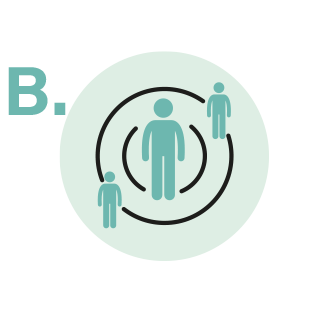
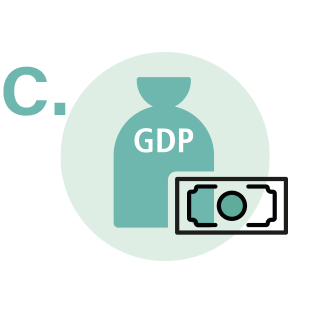
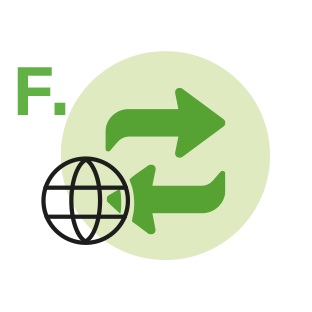

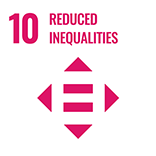



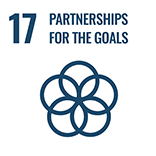

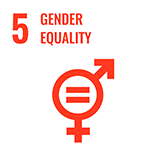
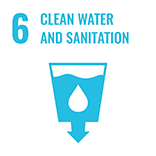
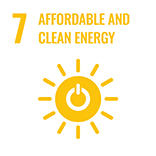

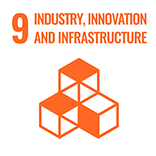
(0) Comments
There is no content